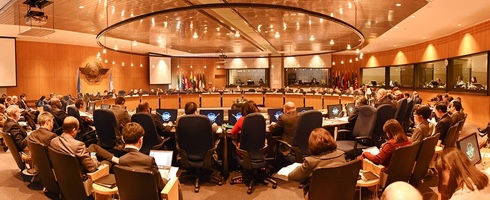European Navigation Conference 2025

We mourn the passing of Prof Em Jac Spaans
Jac was a Professor Emeritus in Navigation Technology at Delft University of Technology. During his distinguished career he also worked as a Professor at the Royal Naval College and as a Special Professor at Nottingham University, U.K.
He was also active for many years in numerous international organisations such as the European Group of Institutes of Navigation (as EUGIN Chairman) and the International Association of Institutes of Navigation (as IAIN President).
In 2004 he was appointed Officer in the royal Order of Orange-Naussau for his contributions to navigation science and applications. In the same year, Jac was elected Honorary Member of the Netherlands Institute of Navigation.
With Jac, the navigation world loses an extraordinary talented leader who was an inspiration to many. We wish his family, friends and all those close to him a lot of strength.
Prof em ‘Capt’ Jac Spaans
2 August 1935 – 13 June 2022
GADSS A new Global Aeronautical Distress and Safety System to improve aviation safety
The tragic disappearance of Malaysia Airlines flight MH370 in 2014 highlighted the need to improve the global air navigation system, especially over remote and ocean areas, including near Australia.
As a result, the new Global Aeronautical Distress and Safety System (GADSS) has been developed by the International Civil Aviation Organization (ICAO), member States and the aviation industry.
In its role as the Australian aviation search and rescue coordination agency, the Australian Maritime Safety Authority (AMSA) contributed significantly to the development of search and rescue elements of the GADSS following the extensive search for MH370.
The GADSS aims to deliver incremental improvements in global capability to track flights, automatically detect flights behaving abnormally and provide timely distress alerting and accurate location data for search and rescue and accident investigation, anywhere in the world.
The GADSS consists of three key elements:
- Aircraft Tracking – leverages existing technology to improve gaps in global aircraft tracking.
- Autonomous Distress Tracking – new system with global coverage that automatically activates and transmits an aircraft’s position when a distress condition is detected in-flight.
- Post-Flight Localization and Recovery – timely accident site location and recovery of flight data to assist search and rescue efforts and accident investigation.
As a member of ICAO’s multidisciplinary working group, AMSA continues to work with ICAO partners and Australian aviation agencies on the development and implementation of the GADSS.
AMSA Executive Director Response Mark Morrow said: ‘International Civil Aviation Day is an opportunity to highlight the importance of major advancements in global airline tracking, including for search and rescue.
‘The disappearance of Malaysia Airlines flight MH370 and high-profile aircraft accidents such as Air France flight AF447 in 2009, highlighted areas for improvement in the global air navigation system.
‘ICAO and member countries like Australia – along with the aviation sector – have worked together to more effectively respond to incidents by developing the GADSS.
‘At this stage, implementation by new large aircraft is the priority for the GADSS. Operators may also choose to retrofit their older aircraft or equip their smaller aircraft.
‘AMSA has been actively involved in the development of the GADSS from its beginning and we welcome the improvements it brings to the global search and rescue system.
‘Australia is responsible for one of the largest search and rescue regions – around 10% of the earth’s surface – where aircraft fly some of the most remote oceanic areas in the world.
‘Although air travel is very safe, the GADSS provides an improved level of assurance that if an aircraft has an in-flight distress event, it will automatically be detected, notified and tracked.’
Morrow said AMSA has increased its engagement with ICAO in recent years to help improve the global SAR system.
He added: ‘We have made significant contributions such as leading the evolution of the first ICAO Asia/Pacific Search and Rescue Plan, providing technical development assistance to Australia’s regional neighbours and helping to shape the GADSS.
‘Australia is committed to the highest aviation safety standards and measures, including search and rescue, set by international convention through ICAO.’
AMSA, as the national aviation search and rescue authority, works with partner aviation safety agencies to maintain Australia’s high aviation safety standards and the delivery of aviation services.
To learn more about GADSS Concept of Operations readers are invited to see here:
Illustration per ICAO and AMSA © .

IALA Publications – January 2022
At the 74th session of the IALA Council in December, as part of a policy to support the vital work of IALA members around the world, issue was approved of two recommendations, twelve guidelines and three model courses.
Here below the documents are listed and may be downloaded at no charge:
Recommendations
Revised R0139 The Marking of Man-made Offshore Structures Ed3.0.
See here: https://www.iala-aism.org/product/marking-of-man-made-offshore-structures-o-139/
Revised R0126 The Use of AIS in Marine Aids to Navigation Ed2.0.
Guidelines
Revised G1078 The Use of AtoN in the Design of Fairways & Channels Ed2.0.
Revised G1054 Preparing for an IMO Audit on Aids to Navigation Service Delivery Ed2.0.
Revised G1128 The Specification of e-Navigation Technical Services Ed1.3.
See here: https://www.iala-aism.org/product/g1128-specification-e-navigation-technical-services/
New G1162 The Marking of Offshore Man-made structures Ed1.0.
See here: https://www.iala-aism.org/product/g1162-ed1-0-the-making-of-offshore-man-made-structures/
New G1163 The Marking of Breakwaters and barriers Ed1.0.
See here: https://www.iala-aism.org/product/g1163-ed-1-0-the-marking-of-breakwaters-and-barriers/
New G1164 Management of Maritime Resource Name Organization Identifiers Ed1.0.
Revised G1065 AtoN Signal Light Beam Vertical Divergence Ed4.1.
See here: https://www.iala-aism.org/product/aids-to-navigation-signal-light-beam-vertical-divergence-1065/
New G1165 Sustainable Structural Design of Marine Aids to Navigation Ed1.0
Revised G1014 Accreditation of VTS Training Organizations and Approval to Deliver IALA VTS Model Courses Ed4.0.
Revised G1110 Use of Decision Support Tools for VTS personnel Ed2.0.
See here: https://www.iala-aism.org/product/use-of-decision-support-tools-for-vts-personnel-1110/
New G1166 VTS in Inland Waters Ed1.0.
See here: https://www.iala-aism.org/product/g1166-ed1-0-vts-in-inland-waters/
New G1167 VTS Management Ed1.0.
file:///C:/Users/Paul/AppData/Local/Temp/G1167-Ed1.0-VTS-Management.pdf
Model Courses
Model Course C2001-8 L2 Module 1.13 Maintenance of Steel Buoys Ed3.0.
See here: https://www.iala-aism.org/product/c2001-8-l2-module-1-13-maintenance-of-steel-buoys-ed-3-0/
Model Course C2001-9 L2 Module 1.14 Power Sources on Buoys Ed3.0.
See here: https://www.iala-aism.org/product/l2-module-1-14-power-sources-on-buoys-ed-3-0/
See here: Model Course C2007-1 L2 Module 7.1&2 Racons Ed3.0.
https://www.iala-aism.org/product/l2-module-7-12-racons-ed-3-0/
Other IALA publications
Members may wish to be rediscover The IALA VTS Manual issued in 2021
The VTS Manual has been a signature document and information source for Governments, Competent Authorities, VTS Authorities, mariners and allied services since first published in 1993. The Manual is a product of collaboration by the world’s leading experts through the VTS Committee, which has the primary oversight for its compilation and editing.
The membership of IALA represents most of the world’s leading national maritime authorities whose delegates are widely experienced VTS professionals.
The IALA VTS Committee is also supported through participation from relevant international sister organizations. This ensures that the Committee is able to speak with international authority on VTS matters and, importantly, to develop new procedures to meet the emerging needs for modern traffic management and to enhance maritime safety.
The 41-page A4 Manual is available to download at no cost here:
https://www.iala-aism.org/product-category/publications/manuals/
In addition Members may wish to be aware of The IALA Navguide:
The IALA Marine Aids to Navigation Manual, otherwise known as The Navguide has been a signature document and information source for IALA members and users for many years. The 2018 edition of the Guide continues this proud tradition and sees it updated with the latest information and developments in the field of Marine Aids to Navigation technology and application.
The Guide is a product of four years’ collaboration by the world’s leading experts on Marine Aids to Navigation, produced by the four primary Committees at IALA, Aton Requirements and Management (ARM); Aton Engineering and Sustainability (ENG); e-navigation (ENAV) and Vessel Traffic Services (VTS). The ARM Committee has the primary oversight for the document’s editing and production.
The Guide plays an important role within the IALA information suite and is regarded as a primary source of information for Marine Aids to Navigation practitioners around the world, along with IALA Standards, Recommendations, Guidelines, Manuals and other publications.
This publication at 184-pages is also available at no charge here:
https://www.iala-aism.org/product-category/publications/manuals/
EASA and Republic of Korea Strengthen civil aviation technical cooperation Letter of Intent signed
The European Plan for Aviation Safety
Early in January the European Union Aviation Safety Agency’s (EASA) Executive Director Patrick Ky and Mr Yong-Seog Kim, Deputy Minister for Civil Aviation for the Ministry of Land, Infrastructure and Transport (MOLIT) of the Republic of Korea (ROK), reported that the previous month they had signed a Letter of Intent to strengthen technical cooperation in the field of civil aviation.
This agreement marks an important milestone in fostering EASA’s relations with Asian authorities and, in particular, it will offer European aviation stakeholders new opportunities to get to know better an important economic player in the region.
The agreement outlines the terms of implementation of the Aviation Partnership Project (EU-ROK APP), which forms part of an EU-funded programme running until 31 March 2024. The programme’s aim is to enhance and strengthen the partnership between the European Union and North Asian countries in the domain of civil aviation.
Following the Memorandum of Understanding (MoU) between EASA and MOLIT from 2019, the agreement further reinforces the partnership between EASA and MOLIT. It sets the frame and principles of cooperation in a wide range of domains such as:
- Air Operations.
- Air Traffic Management (ATM).
- Aviation Safety.
- Sustainable Aviation.
- Aviation Security.
- Unmanned Aerial Vehicle (UAS) and Urban Air Mobility (UAM).
More information and details is available on the project page here:
The European Plan for Aviation Safety
In mid-January the European Union Aviation Safety Agency (EASA) published the 11th edition of the European Plan for Aviation Safety (EPAS).
EPAS sets out the strategic priorities and main risks affecting the European aviation system, and defines the necessary actions to mitigate them, with the primary objective of further improving aviation safety. EPAS is the regional aviation safety plan (RASP) for EASA Member States. It supports safety management at State level and constitutes the main input to the EUR RASP for the ICAO EUR Region.
The Covid-19 pandemic continues to have significant repercussions for the entire aviation sector. Accordingly, recovering from the crisis without adversely affecting the high level of safety performance is included as a new focus area within the existing strategic priorities.
In addition to addressing the safety issues emerging from Covid-19, this edition supports the further modernisation of the aviation system, in the areas of safety, efficiency, level playing field and environmental protection.
The Plan is available here: https://www.easa.europa.eu/downloads/134920/en
Webb’s mirror deployed
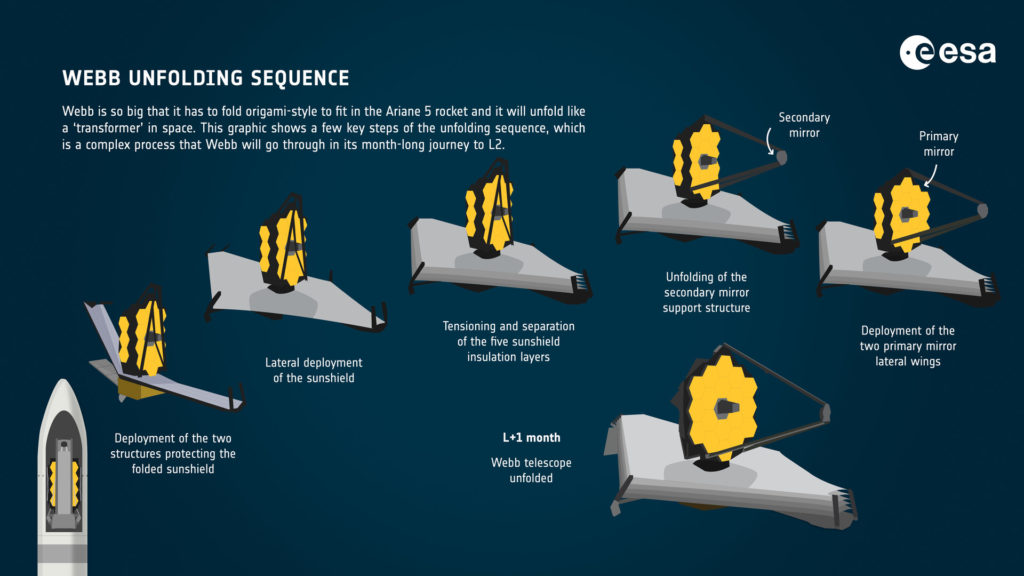
According to the European Space Agency (ESA) on 8 January 2022 the James Webb Space Telescope team successfully fully deployed its iconic 6.4-metre, gold-coated primary mirror, completing the final stage of all major spacecraft deployments to prepare for science operations.
Josef Aschbacher, ESA Director General, commented: ‘The successful unfolding of the Webb telescope has been a complex but impressive engineering masterpiece. On behalf of ESA, I want to sincerely congratulate our colleagues at NASA for this achievement.
‘Webb is an international partnership led by NASA, where ESA is providing key contributions in the form of instruments, science teams and, very importantly, a successful launch on Christmas Day from the European Spaceport in Kourou. I am grateful to NASA, CSA and our European team including CNES, Arianespace and ArianeGroup for this excellent cooperation.’
The two wings of Webb’s primary mirror were folded to fit inside the fairing of an ESA-provided Ariane 5 rocket prior to launch. After more than a week of other critical spacecraft deployments, the Webb team began remotely unfolding the hexagonal mirror segments of the largest mirror ever launched into space.
This was a multi-day process, with the first (port) side of the mirror deployed on 7 January and the second (starboard) side of the mirror deployed on 8 January. Mission Operations Center ground control at the Space Telescope Science Institute in Baltimore began deployment of the starboard mirror at 1353 GMT/1453 CET. Once the primary mirror’s second side panel extended out and latched into position at 1817 GMT/1917 CET, all deployments were declared complete.
To align the optics
The world’s largest and most complex space science observatory will now begin releasing and moving its 18 primary mirror segments to align the telescope optics. The ground team will command 126 actuators on the reverse side of the segmented mirrors into position and flex each mirror – an alignment process that will take months to complete. Then, the science instruments will undergo a calibration period, prior to delivering Webb’s first images this summer.
Soon, Webb will also make a third mid-course correction burn – one of three planned course corrections to place the spacecraft precisely in orbit around the second Lagrange point, commonly known as L2, 1.5 million km from Earth. This is Webb’s final orbital position, where its sunshield will protect it from light from the Sun, Earth and Moon that could interfere with observations of infrared light. Webb is designed to peer back over 13.5 billion years to capture infrared light from celestial objects with much higher resolution than ever before, and to study our own Solar System as well as distant worlds.
Professor Günther Hasinger, ESA Director of Science added: ‘We are thrilled that the complex telescope unfolding worked successfully. Now we hold our breath for the optics alignment, the instrument commissioning, and finally the fascinating first science results.’
Ariane 5 launch vehicle
Webb is the largest, most powerful telescope ever launched into space. As part of an international collaboration agreement, ESA has provided the telescope’s launch service using the Ariane 5 launch vehicle. Working with partners, ESA was responsible for the development and qualification of Ariane 5 adaptations for the Webb mission and for the procurement of the launch service by Arianespace. ESA has also provided the workhorse spectrograph NIRSpec and 50% of the mid-infrared instrument MIRI, in collaboration with the University of Arizona. Webb is an international partnership between NASA, ESA and the Canadian Space Agency (CSA).
An animated sequence of the unfolding operation is available here:
https://www.esa.int/Science_Exploration/Space_Science/Webb/Webb_deployment_complete
Illustration per www.esa.int ©
New compact jamming system ready for F-16s
In late October 2021 a Danish F-16 conducted a series of flight demonstrations of the Leonardo Compact Jamming System (CJS) integrated in Terma’s ECIPS-pylon, pictured here. The two companies are now ready to provide the integrated solution to potential customers.
Fighter jets such as the F-16 have a need for protection and the ability to jam enemy radars. The Leonardo CJS-jammer has a small form factor and incorporates modern Digital Radio Frequency Memory (DRFM) technology, making it the obvious choice to integrate into the Terma modified F-16 Wing Weapon Pylon while still retaining the full use of the underwing station to carry standard external stores.
Announcing the evolution shortly before the Festive break Matt Glanville, Head of Strategic EW Campaigns, Leonardo UK, commented: ‘ECIPS-CJS provides F-16 operators with a persistent, gold-standard DRFM jamming capability without taking up a weapons station, so it is ideal for customers looking for a simple and cost-effective way to equip their aircraft with high-powered protection from radar-guided threats.’
Both companies have jointly invested and worked together to develop the concept over the last couple of years and during 2021 the system was tested at Terma and Leonardo System Integration Laboratories:
David Martin, Senior Vice President of Terma Aeronautics, added: ‘Having supported the F-16 war fighter community for over 44 years, supplying over 15,000 pylons and 2,500 ALQ-213 EW Controllers, Terma is excited to be working with Leonardo to bring this advanced self-protection capability to the F-16 war fighter’.
After thorough laboratory tests were passed successfully, the system was put to the ultimate test onboard a Royal Danish Airforce (RDAF) F-16 operated by the test pilot, ‘POL’. He conducted safety of flight sorties followed by several performance demonstrations against an RDAF radar test site with a challenging ground threat emitter.
Several different techniques were employed, and after the test flight, ‘POL’ stated: ‘It has been a very positive experience to be part of the Terma/Leonardo demo programme and I am impressed with the performance of the system, especially since it was the first F-16 flight’.
Terma and Leonardo are now looking forward to discussing more details on the ECIPS-CJS with potential customers.
About Leonardo
Leonardo is a global high-technology company and one of the world’s top Aerospace, Defence and Security providers.
The company has a significant industrial presence in Italy, the UK, Poland and the USA, where it also operates through subsidiaries that include Leonardo DRS (defence electronics), and joint ventures and partnerships: ATR, MBDA, Telespazio, Thales Alenia Space and Avio. Leonardo’s divisions are organised around its areas of technological and product leadership and incorporate helicopters, aircraft, aero-structures, electronics, cyber security and space.
Listed on the Milan Stock Exchange (LDO), in 2020 Leonardo recorded consolidated revenues of €13.4 billion and invested €1.6 billion in research and development.
The company has been part of the Dow Jones Sustainability Index (DJSI) since 2010 and was named the sustainability global leader in the aerospace and defence sector for the second year in a row by the DJSI in 2020.
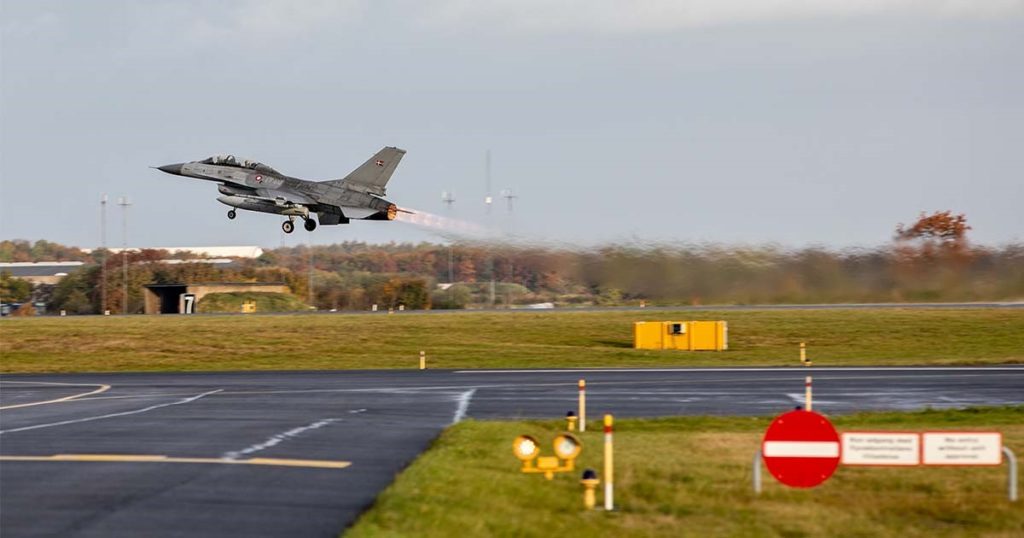
Remembering a Far East campaign
An interesting paperback title has been received in recent weeks: The Malayan Emergency and Indonesian Confrontation: The Commonwealth’s Wars 1948-1966, by Robert Jackson, published by Pen & Sword Aviation.
The struggle with Communist terrorists in Malaya known as The Emergency became a textbook example of how to fight a guerrilla war, based on political as much as military means. This book deals with both the campaign fought by British, Commonwealth and other security forces in Malaya against Communist insurgents, between 1948 and 1960, and also the security action in North Borneo during the period of Confrontation with Indonesia from 1962 to 1966. Both campaigns provided invaluable experience in the development of anti-guerrilla tactics, and are relevant to the conduct of similar actions which have been fought against insurgent elements since then.
Precise Ariane 5 launch likely to extend Webb’s expected lifetime

After a successful launch of the NASA/ESA/CSA James Webb Space Telescope on 25 December, and completion of two mid-course correction manoeuvres, the Webb team has analysed its initial trajectory and determined the observatory should have enough propellant to allow support of science operations in orbit for significantly more than a ten-year lifetime (the minimum baseline for the mission is five years). This was reported by the European Space Agency (ESA) on 29 December.
The analysis shows that less propellant than originally planned is needed to correct Webb’s trajectory toward its final orbit around the second Lagrange point known as L2, a point of gravitational balance on the far side of Earth away from the Sun. Consequently, Webb will have much more than the baseline estimate of propellant – though many factors could ultimately affect Webb’s duration of operation.
The accuracy of the launch trajectory had another result: the timing of the solar array deployment. That deployment was executed automatically after separation from the Ariane 5 based on a stored command to deploy either when Webb reached a certain attitude toward the Sun, ideal for capturing sunlight to power the observatory, or automatically at 33 minutes after launch.
Because Webb was already in the correct attitude after separation from the Ariane second stage, the solar array was able to deploy about a minute and a half after separation, approximately 29 minutes after launch.
A New Year message from the president of the IAIN
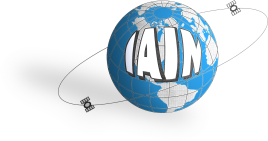
With restrictions brought about by the Covid pandemic it was with a heavy heart that we had to postpone our World Congress from 2021 and the next one will now be held in the People’s Republic of China in 2024. Nevertheless, we were able to hold a General Assembly in November 2021 at the time of the International Navigation Congress, INC NAV 2021, in Edinburgh, and you can see on our website the Officers’ Committee duly elected thereat.
I am particularly pleased that we at IAIN maintain our liaison with other kindred organizations such as: the International Civil Aviation Organization, the International Maritime Organization, the International Hydrographic Organization, the International Committee on Global Navigation Satellite Systems (ICG), the US Positioning, Navigation and Timing Foundation, the Resilient Navigation and Timing Foundation and the Comité International Radio-Maritime and others. We are able to contribute experts to these forums. This is a valuable capability and at the same time enables us to increase our profile. Long may this continue.
Our contributions to the forums have undoubtedly brought some degree of advancement to the studies of a multitude of topics relative to safety at sea, in the air, in space and on land. This is all to the good of trade, defence and the safety and security of mankind.
During the past year, despite the Covid-19 difficulties we have seen advances in the evolution of the Maritime Autonomous Surface Ship (MASS) and here IMO began a scoping exercise to look into how safe, secure and environmentally sound such craft may be as addressed in IMO documents.
Early in December we noted with glee the report by the European Space Agency (ESA) that Europe’s largest satellite constellation had grown even bigger, following the launch of two more Galileo navigation satellites by Soyuz launcher from Europe’s Spaceport in French Guiana. Galileo satellites 27-28 add to an existing 26-satellite constellation in orbit, providing what is claimed to be the world’s most precise satnav positioning to more than 2.3 billion users around the globe.
These are just two of the many advances in navigation science in which our members have been involved over the past year.
Finally, I pay tribute to the efforts of our Members during these difficult times while Covid-19 remains with us. These loyal, reliable, and hard-working people have continued to provide navigation services so essential for the safety of traffic and thus the maintenance of the global economy at the same time preserving the environment and maintaining peace world wide.
The past year has not been easy for us all. Staff of our Members have remained where possible at their normal workplaces in responding to the exigencies of their services particularly with regard to essential maintenance, outages and the tasks required to keep services operational. Such devotion deserves special mention.
As one year ends and another is about to open I take this opportunity, on behalf of the IAIN Officers and our Secretariat, to wish the world wide navigation community a peaceful and joyous Festive Season and a successful 2022.

Professor Krzysztof Czaplewski,
President IAIN
Christmas Day Webb telescope launch
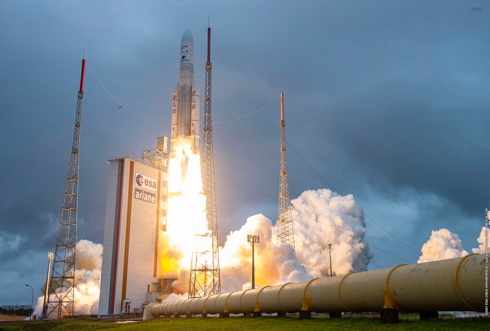

ESA reported on Christmas Day that the James Webb Space Telescope had lifted off on an Ariane 5 rocket from Europe’s Spaceport in French Guiana, at 1320 CET (GMT + 1) its mission to unlock the secrets of the Universe. Following launch and separation from the rocket, Webb’s mission operations centre in Baltimore, USA confirmed Webb deployed its solar array and is in good condition, marking the launch a success.
Incidentally, the telescope’s sunshield measures 21 metres by 14 metres. Stowed inside the rocket for launch, the folded sunshield was packaged in a confined area to accommodate the limited space inside the 5.4-metre diameter rocket fairing which protected Webb during lift-off and on its journey through the atmosphere.
In the coming month, Webb, an international partnership between NASA, ESA and the Canadian Space Agency (CSA), will travel to its destination: the second Lagrange point (L2), where it will study the Universe in infrared.
World’s most sophisticated commercial communications satellite successfully launched
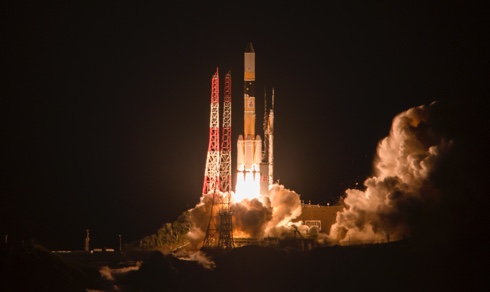
On 23 December Inmarsat, a world leader in global, mobile satellite communications, confirmed the successful launch the previous day of its first Inmarsat-6 satellite, I-6 F1, by Mitsubishi Heavy Industries (MHI) from the JAXA Tanegashima Space Center in Japan.
The Inmarsat-6s (I-6) are Inmarsat’s first ever hybrid L- and Ka-band satellites, incorporating increased capacity and new technological advances for ELERA‘s transformational L-band services alongside additional Global Xpress (GX) high-speed broadband capacity.
Adding to an existing global fleet of 14 geostationary satellites they extend Inmarsat’s commitment to mission critical services while enabling a new generation of pioneering technologies to connect and sustain the world.
This launch is the first of seven planned for Inmarsat by 2024 in the company’s fully-funded technology roadmap.
ESA highlights 2021
As always, ESA has been at the forefront of science, with several science missions en route to their destinations or being prepared for flight, such as BepiColombo, Solar Orbiter, JUICE and ExoMars, and not least rounding off the year with the impending launch of the James Webb Space Telescope.
Europe’s Copernicus programme continues to be the largest Earth observation system in the world, and ESA is even preparing more Earth observation missions.
In 2021, ESA astronaut Thomas Pesquet carried out his Alpha mission to the Space Station, and Matthias Maurer began his Cosmic Kiss mission, continuing into 2022.
Watch the ESA 2021 highlights video.
The navigation Flashlight 2021-3
From our Austrian member institute, the Österreichischer Verein für Navigation, we have received word of the latest issue of their regular publication, The Navigation Flashlight. It is published three times a year, currently in its twenty first year of publication and it is in German.
Israel Navigation Conference and Exhibition – 31 January 2022

The Navigation Workshop is a biennial event organized and sponsored by the Israel Association for Automatic Control (IAAC). For those not familiar with the association, the IAAC is a non-profit organization congregating a large number of members from Academy and Industry interested in the broad areas of Control and System Theory. For further details and the opportunity to subscribe to the IAAC mailing list, please check the IAAC site.
Following the huge success of previous events, the 2022 edition has been scheduled for 31 January at the Daniel Hotel, Herzliya.
The workshop is a one day event dedicated to technical talks that range from fundamental research, to applications, to field test results.
Padhraic Kelleher new President ICAO Air Navigation Commission
It was announced from Montreal on 16 December that the Council of the International Civil Aviation Organization (ICAO) had appointed Mr Padhraic Kelleher to a one-year renewable term as President of the ICAO Air Navigation Commission (ANC), the UN civil aviation organization’s main technical review body.
Mr. Kelleher’s mandate begins on 1 January 2022. As President of the ANC, he will lead the Commission’s work on the development of ICAO’s global plans for safety and for air navigation capacity and efficiency as well as the Standards and Recommended Practices annexed to the Chicago Convention. The management of the ANC’s preparations for ICAO’s 2022 Assembly will also be among his first key responsibilities.
The year at ESA
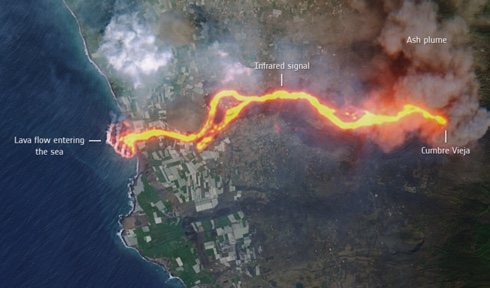
At the European Space Agency (ESA) on 17 December readers were invited to view the Year in Images 2021, the year through the lens with a selection of twenty-four of ESA’s favourite images for the year.
One of them, captured by the Copernicus Sentinel-2 mission on 30 September, shows the flow of lava from the volcano erupting on the Spanish island of La Palma. The cascade of lava can be seen spilling into the Atlantic Ocean, extending the size of the coastline. This ‘lava delta’ covered about 20 hectares when the image was taken.
This Sentinel-2 image has been processed in true colour, using the shortwave infrared channel to highlight the lava flow. The Sentinel-2 mission is based on a constellation of two identical satellites, each carrying an innovative wide swath high-resolution multispectral imager with 13 spectral bands for monitoring changes in Earth’s land and vegetation.
Arctic Convoys 1941-1945 by Richard Woodman
This paperback title was first published in 1994 by John Murray and by Pen & Sword Maritime no fewer than seven times from 2007 to this year, an amazing record for a subject that is still being studied in depth along with the many maritime aspects of both World Wars and where the current publisher keeps this broad topic very much alive.
In the preface, Woodman draws attention to the problems of navigating in the polar seas: ‘A magnetic compass forsakes the familiar, comforting horizontal plane expected of it, and tries to dip down towards the vast mass of iron which forms the earth’s magnetic pole. The normally more precise and less variable gyro compass does the opposite and, in seeking a polar star, tilts upwards. Even the projection of the chart is different from that used elsewhere on the earth’s surface. Atmospheric depressions cause overcast, and mist, fog, and ice brume obscure the horizon, depriving the navigator of the use of his sextant, almanac and chronometer. Often ships ran on dead reckoning, or DR, an amalgam of course, speed and an assumed distance, with estimated values for leeway thrown in for good measure, a mixture of inspiration and guesswork over which no two navigators ever agree. Frequently ships, whether naval or merchantman, simply got lost, particularly those separated from a convoy or proceeding alone’
Coast Guard Cutter Juniper completes AtoN mission across the Hawaiian Islands
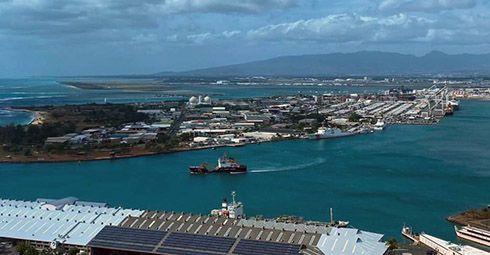
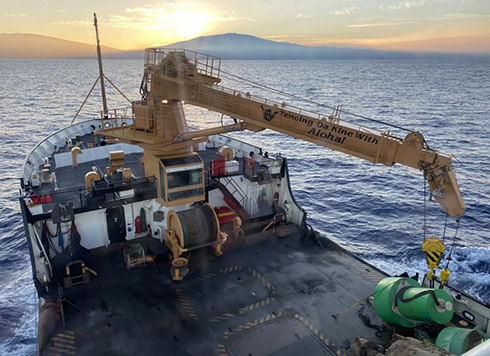
It was reported from Honolulu early in December that the crew of the Coast Guard Cutter Juniper (WLB 201) had concluded a successful week-long aids to navigation maintenance and discrepancy response operation throughout the Hawaiian Islands.
During the 848-nautical mile patrol, the crew of the 225-foot seagoing buoy tender completed 21 buoy evolutions, recovered two sinking buoys, and hauled a beached buoy from the shores of Kahului with assistance from a Coast Guard Station Maui boat crew.
This aids to navigation mission provided the needed infrastructure to ensure a maritime transportation system that promotes economic prosperity and an uninterrupted flow of maritime commerce throughout the Pacific.
International Civil Aviation Day – A message from the UN Secretary General
A message from the UN Secretary General His Excellency António Guterres: ‘On International Civil Aviation Day, we recognize the many contributions of air travel to our world – from connecting societies and delivering vital goods to supporting millions of livelihoods and contributing billions to the global economy. Covid-19 continues to put deep stresses on international aviation, even as increased vaccination rates and testing protocols make air travel possible again. Countries pledged recently to enhance cooperation and risk management, under the auspices of the International Civil Aviation Organization (ICAO).’
December 7, International Civil Aviation Day – The ITF view
We should be looking ahead, this International Civil Aviation Day, to the challenges of economic recovery and climate change. Instead, we’re still gripped by the devastating impact that Covid-19 continues to have of aviation workers and the industry worldwide. This was the message on the day, 7 December, from the International Transport Workers’ Federation (ITF).
ITF’s message continued to inform that governments in some rich countries have put their own vaccine programmes ahead of tackling the pandemic as a global emergency, and sadly the rise of new, dangerous variants is a setback to the industry’s already fragile recovery.
Workers in aviation are paying the price for this. The knee-jerk reaction to the Omicron variant and tightening of travel restrictions begin a new wave of devastation, hitting an industry already ravaged by the pandemic.
ICAO and UNWTO Joint Statement for Aviation Day
For the first time since International Civil Aviation Day was established, in 1994, ICAO commemorated 7 December this year with a special Joint Statement with the UN World Tourism Organization (UNWTO) calling for accelerated global efforts to reconnect the world. This was reported by ICAO from Montreal on the day.
With global connectivity recovery on course, both UN bodies called for intensified efforts towards vaccine equity and stressed that restrictions on travel due to new variants of Covid-19 must only be used ‘as a very last resort,’ noting they are ‘discriminatory, ineffective and against the guidance of the World Health Organization.’
Two new satellites mark further enlargement of Galileo

On 5 December it was reported by the European Space Agency (ESA) that Europe’s largest satellite constellation had grown even bigger, following the launch of two more Galileo navigation satellites by Soyuz launcher from Europe’s Spaceport in French Guiana on that day.
Galileo satellites 27 and 28 add to an existing 26-satellite constellation in orbit, providing what is claimed to be the world’s most precise satnav positioning to more than 2.3 billion users around the globe.
ESA Director of Navigation Paul Verhoef commented: ‘Today’s lift-off marks the eleventh Galileo launch of operational satellites in ten years: a decade of hard work by Europe’s Galileo partners and European industry, over the course of which Galileo was first established as a working system then began Initial Services in 2016. With these satellites we are now increasing the robustness of the constellation so that a higher level of service guarantees can be provided.’
The world’s fastest all-electric vehicle Spirit of Innovation stakes claim
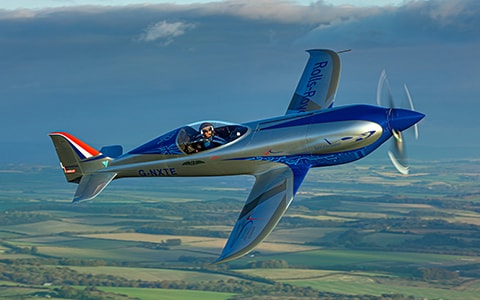
Rolls-Royce has a rich history of air speed record attempts and breaking records, dating back to the Schneider Trophy competitions of the early 1930s.
The speed achieved by test pilot and Rolls-Royce Director of Flight Operations Phill O’Dell in the Spirit of Innovation was more than 213.04 km/h (132 mph) faster than the previous record set by the Siemens eAircraft in 2017. Never in the history of the FAI record attempts has there been such a significant increase in speed over such a short time, highlighting the rapid pace at which electrification of aerospace is advancing.
Towards the end of November Rolls-Royce indicated that the Spirit of Innovation is part of the ACCEL or Accelerating the Electrification of Flight project. Half of the project’s funding is provided by the Aerospace Technology Institute (ATI), in partnership with the Department for Business, Energy & Industrial Strategy and Innovate UK.
Spirit of Innovation, the aircraft, was propelled on its recent record breaking runs by a 400kW (500+hp) electric powertrain and the most power-dense propulsion battery pack ever assembled in aerospace. Rolls-Royce worked in partnership with aviation energy storage specialist Electroflight and automotive powertrain supplier YASA.
SEA-KIT uncrewed surface vessel trials
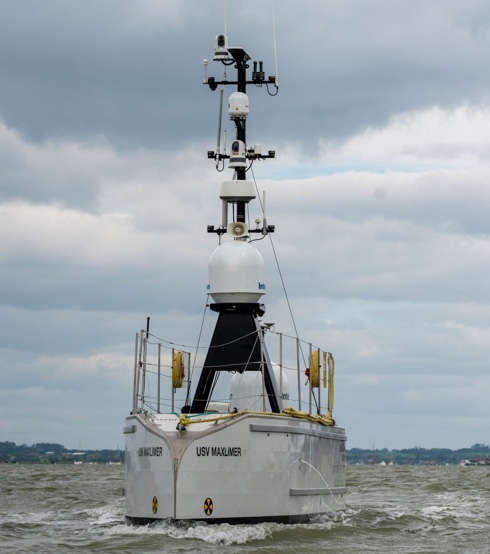
Inmarsat announced at the end of November that it had installed a new connectivity capability using virtual networks that will establish higher standards for over-the-horizon uncrewed vessel control.
The installation connects the SEA-KIT International uncrewed surface vessel (USV) Maxlimer to the best available network at all times by switching as necessary between Fleet LTE, Global Xpress (GX) and FleetBroadband satellite services when out of range.
It is understood that the combination will set new standards in continuous connectivity to serve a broader range of USV situations and support the next phase of SEA-KIT technology trials, which started in September off the coast of Plymouth, (UK, South West).




